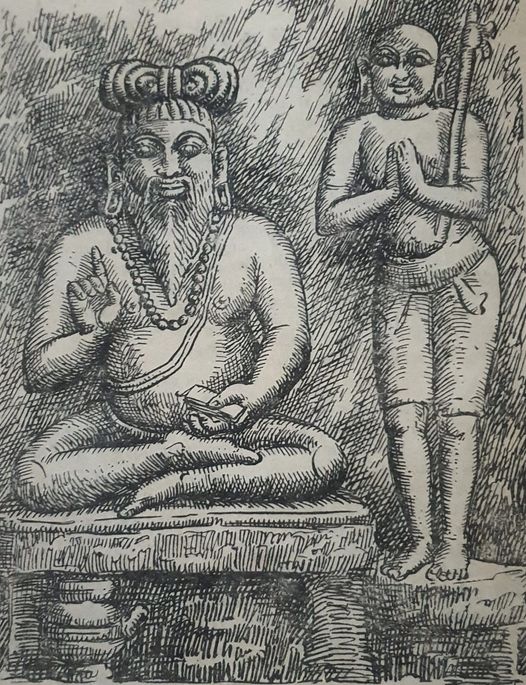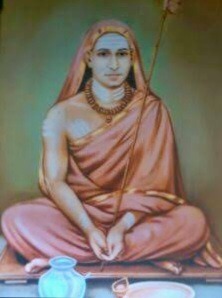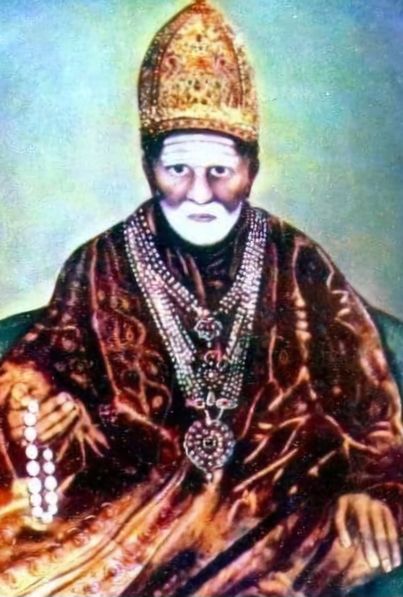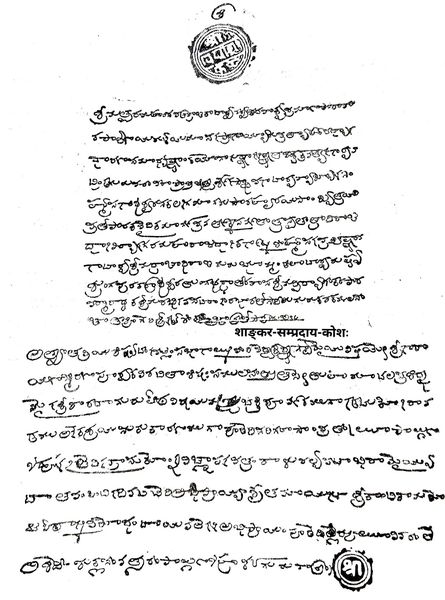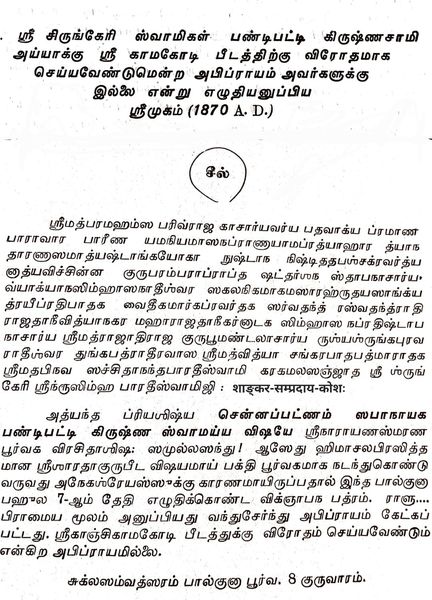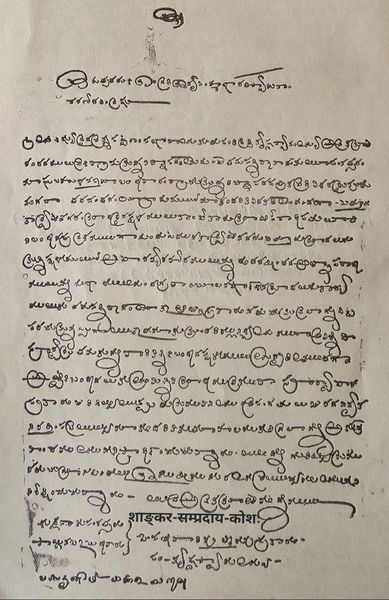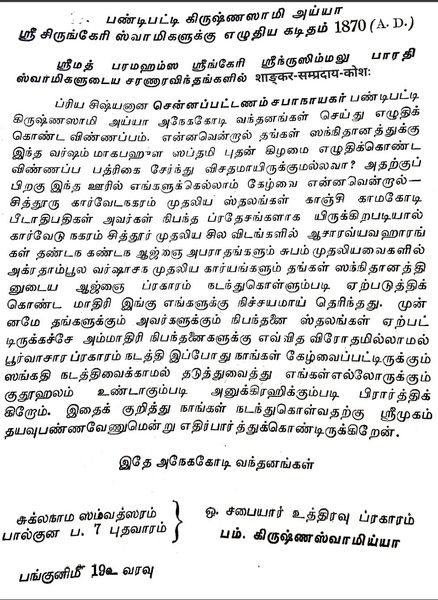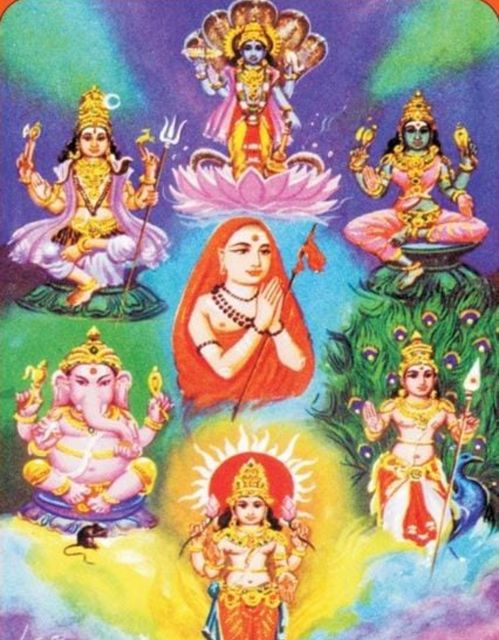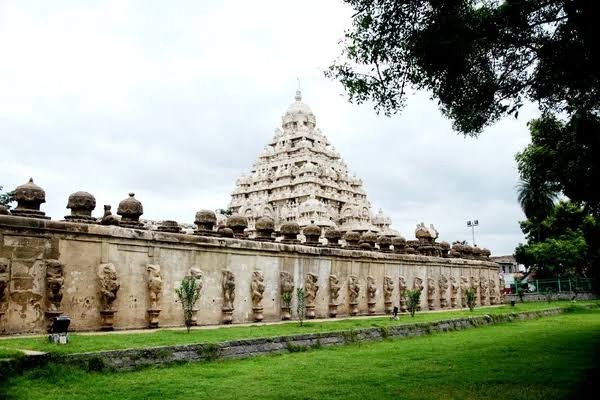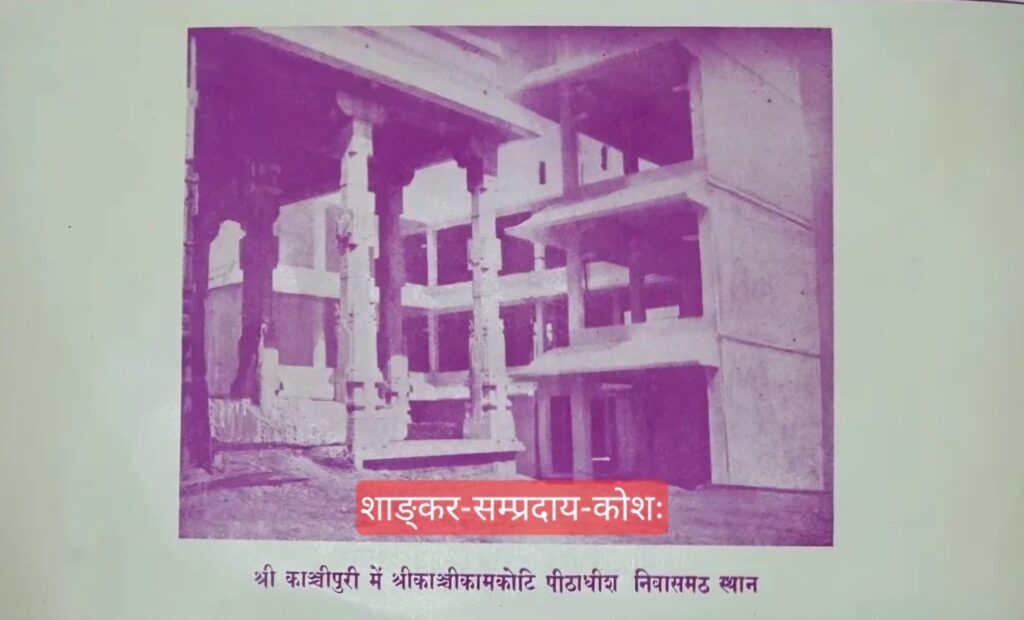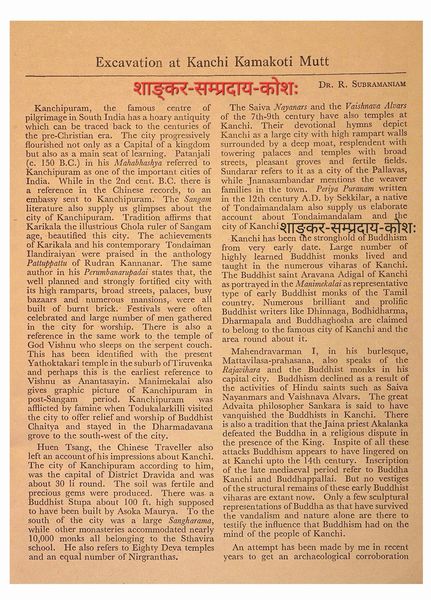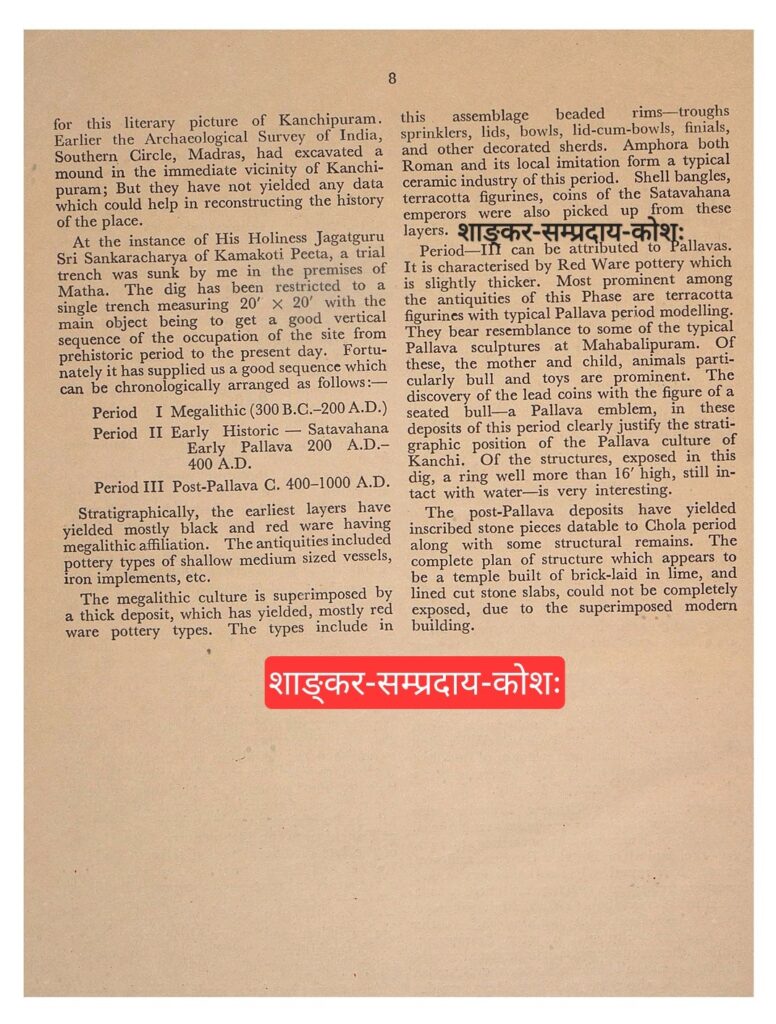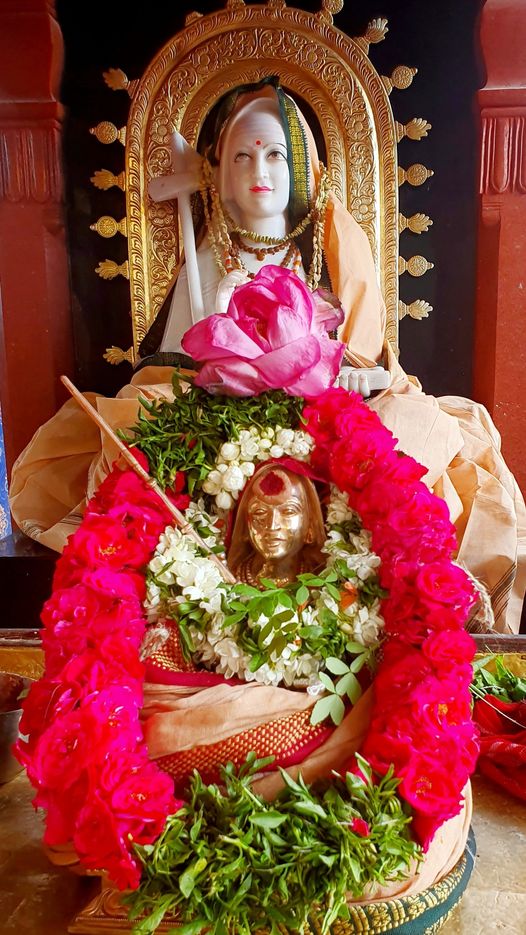In June 1993, the Shankaracharyas of the four Peetams Kanchi, Tunga Sringeri, Puri and Dwaraka met at Tunga Sringeri, Karnataka, to discuss measures to strengthen national integrity and unity among people and to foster peace in society on the basis of teachings of Shri Shankaracharya.
At the end of the two day meeting the Acharyas of the four Peetams made a joint declaration which appeared in the Hindu as follows:
“We declare :
(a) that all Shankaracharyas will work in unison for the maintenance of peace in the country and for welfare of all its citizens.
(b) That we will take up for implementation projects for sustenance and propagation of Sanatana Dharma and the rich values of our age old traditions in its true spirit.
(c) That all political parties and bodies should not meddle with religion and should not interfere and keep away from any religious issue.
(d) That all political parties and bodies agree that the construction, upkeep etc. of the Temple at Ayodhya be left to a suitable body.
(e) That the body should be constituted of a political, religious leaders whose eminence and independence are transparent and that the Central Government handover the acquired body for Temple construction to this body.
All Shankaracharyas make known the decision that they intend exchanging views frequently from now on to continue efforts for finding solution on issues that are to be faced from time to time.
(Source: The Hindu, June 23 & 28, 1993)

